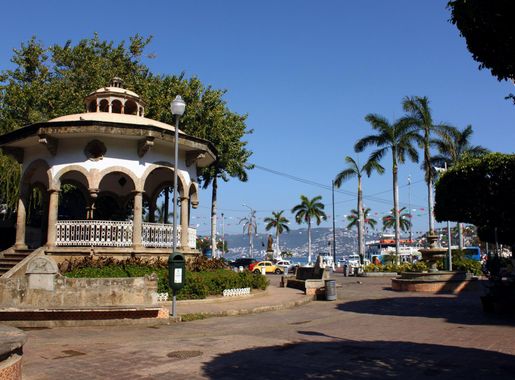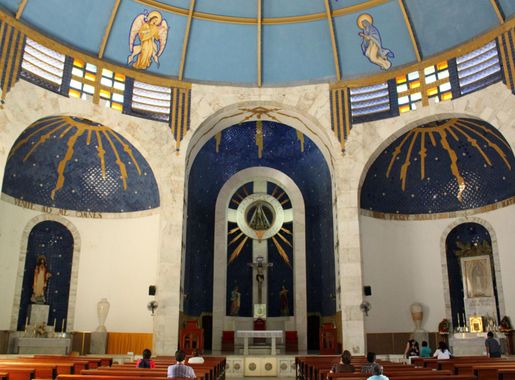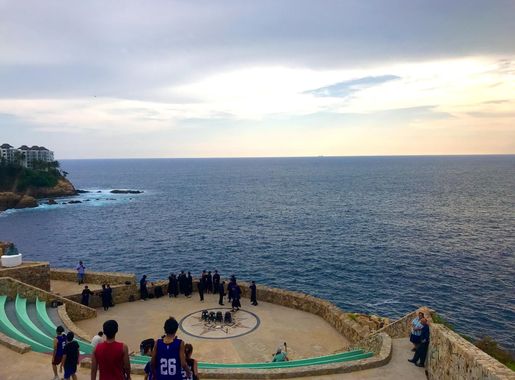
The Timeless Charm of Acapulco Tradicional
Discover the rich history, vibrant culture, and stunning coastal beauty of Acapulco Tradicional, the heart and soul of Acapulco, Mexico.
Acapulco Tradicional, the heart and soul of Acapulco, offers a nostalgic glimpse into the city's golden era. Nestled along the Pacific coast, this neighborhood is a blend of old-world charm and vibrant Mexican culture. Stroll through its streets, and you'll encounter historic landmarks, bustling markets, and the warm hospitality of its residents. One of the must-visit spots is La Quebrada, where fearless cliff divers perform breathtaking jumps from dizzying heights into the ocean below. This tradition, dating back to 1934, is a testament to the daring spirit of the locals. Nearby, the San Diego Fort stands as a reminder of Acapulco's colonial past. This well-preserved fortress now houses a museum showcasing the region's rich history. For those looking to immerse themselves in local life, the Zócalo is the place to be. This central square is a hub of activity, with street vendors selling everything from handmade crafts to delicious street food. In the evening, the Zócalo transforms into a lively gathering spot with live music and dancing. The nearby Nuestra Señora de la Soledad Cathedral adds a touch of serenity to the bustling square. Acapulco Tradicional also boasts some beautiful beaches like Caleta and Caletilla. These tranquil spots are perfect for a relaxing day by the sea, with calm waters ideal for swimming and snorkeling. For a taste of the local cuisine, head to the Mercado Central, where you can savor fresh seafood and traditional Mexican dishes. Whether you're a history buff, a foodie, or someone looking to soak up the local culture, Acapulco Tradicional offers a rich and unforgettable experience.
Local tips in Acapulco Tradicional
- Visit La Quebrada in the late afternoon to catch the cliff divers' performances at sunset.
- Wear comfortable shoes for walking around the Zócalo and exploring the historic sites.
- Bring cash, as many local vendors in the markets do not accept credit cards.
- Try the fresh seafood at the Mercado Central for an authentic taste of Acapulco.
- Plan to visit the San Diego Fort early in the day to avoid crowds and enjoy a peaceful tour.
The Timeless Charm of Acapulco Tradicional
Acapulco Tradicional, the heart and soul of Acapulco, offers a nostalgic glimpse into the city's golden era. Nestled along the Pacific coast, this neighborhood is a blend of old-world charm and vibrant Mexican culture. Stroll through its streets, and you'll encounter historic landmarks, bustling markets, and the warm hospitality of its residents. One of the must-visit spots is La Quebrada, where fearless cliff divers perform breathtaking jumps from dizzying heights into the ocean below. This tradition, dating back to 1934, is a testament to the daring spirit of the locals. Nearby, the San Diego Fort stands as a reminder of Acapulco's colonial past. This well-preserved fortress now houses a museum showcasing the region's rich history. For those looking to immerse themselves in local life, the Zócalo is the place to be. This central square is a hub of activity, with street vendors selling everything from handmade crafts to delicious street food. In the evening, the Zócalo transforms into a lively gathering spot with live music and dancing. The nearby Nuestra Señora de la Soledad Cathedral adds a touch of serenity to the bustling square. Acapulco Tradicional also boasts some beautiful beaches like Caleta and Caletilla. These tranquil spots are perfect for a relaxing day by the sea, with calm waters ideal for swimming and snorkeling. For a taste of the local cuisine, head to the Mercado Central, where you can savor fresh seafood and traditional Mexican dishes. Whether you're a history buff, a foodie, or someone looking to soak up the local culture, Acapulco Tradicional offers a rich and unforgettable experience.
Iconic landmarks you can’t miss
Plaza Álvarez
Discover the serene beauty of Plaza Álvarez, Acapulco’s urban oasis, perfect for relaxation, cultural immersion, and unforgettable memories.
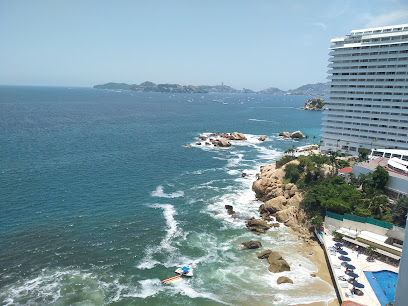
La Quebrada
Experience the breathtaking cliff diving at La Quebrada in Acapulco, where culture and adrenaline meet against stunning ocean views.

Fiesta & Bonanza yachts
Experience the stunning beauty of Acapulco on Fiesta & Bonanza Yachts, where adventure meets relaxation on the Pacific waves.
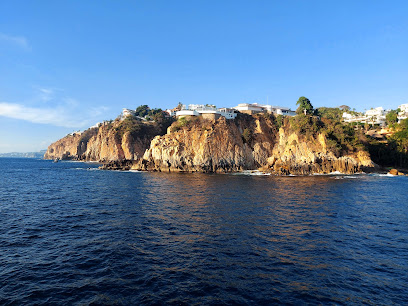
Parque Papagayo
Explore the lush landscapes and recreational delights of Parque Papagayo, an ecological haven in vibrant Acapulco, perfect for nature lovers and families.

Parque De La Reina
Discover the lush beauty of Parque De La Reina in Acapulco, a tranquil garden oasis perfect for relaxation, picnics, and cultural experiences.

Acapulco Historical Museum of Fort San Diego
Explore Acapulco's past at the Historical Museum of Fort San Diego, a captivating blend of culture, history, and stunning architecture in a picturesque setting.
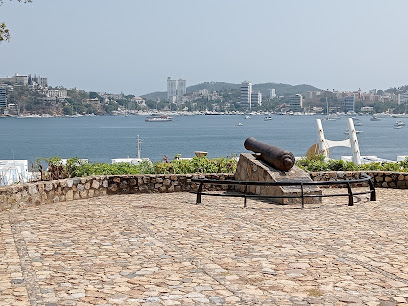
Mirador Puerto Marqués
Experience breathtaking ocean views at Mirador Puerto Marqués, a stunning scenic spot in Acapulco, Guerrero, ideal for relaxation and photography.
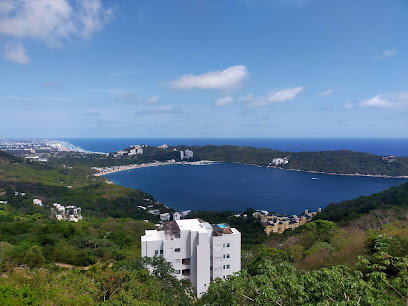
Catedral de Acapulco (Nuestra Señora de la Soledad)
Discover the architectural beauty and spiritual serenity of the Catedral de Acapulco, a must-visit landmark in the heart of the city.
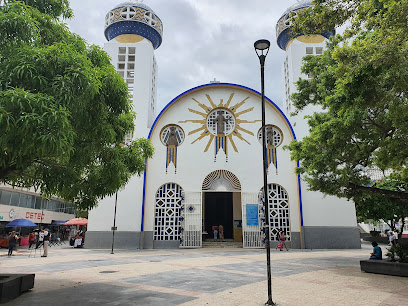
La Vicenta
Discover La Vicenta, Acapulco's top steakhouse, offering a vibrant atmosphere and mouthwatering grilled meats for an unforgettable dining experience.

Playa Pie de La Cuesta
Explore the tranquil beauty of Playa Pie de La Cuesta, a hidden beach paradise near Acapulco, perfect for relaxation and unforgettable sunsets.
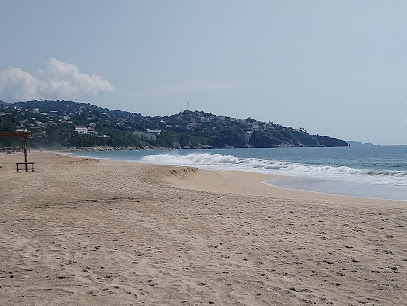
Pichilingue Beach
Discover the serene beauty of Pichilingue Beach in Acapulco, a perfect blend of relaxation and adventure for every traveler.
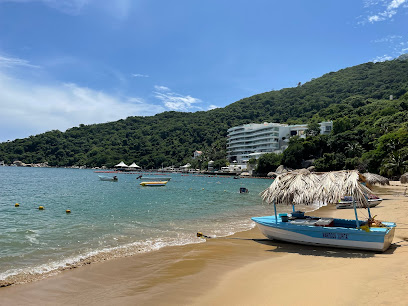
Acapulco Bay
Discover Acapulco Bay, where stunning beaches, thrilling water sports, and rich cultural experiences await in this coastal Mexican paradise.
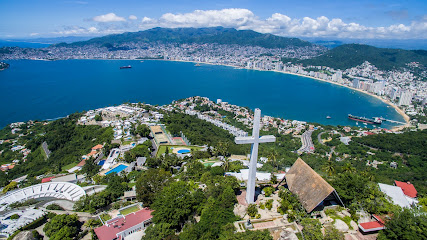
Zona Arqueológica de Palma Sola
Explore the ancient rock carvings and rich cultural heritage at Zona Arqueológica de Palma Sola in Acapulco, where history meets nature.
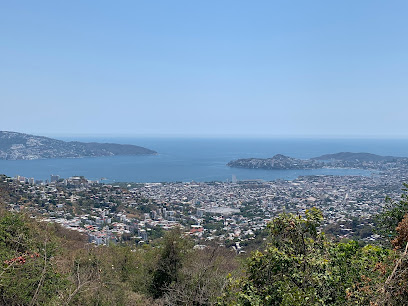
Estatua de Apolonio Castillo
Discover the enchanting Apolonio Castillo Statue in Acapulco, a cultural gem with stunning ocean views and a rich local heritage.
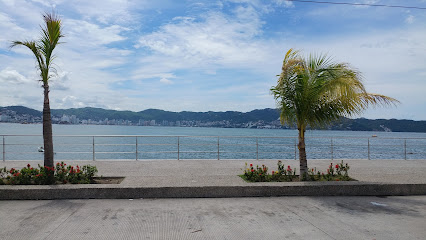
Fortín Álvarez
Explore the rich history of Acapulco at Fortín Álvarez, a historic reenactment site with breathtaking views of the coastline.
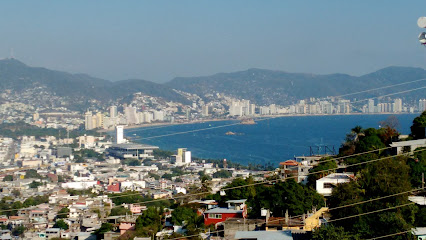
Unmissable attractions to see
Plaza Álvarez
Experience the vibrant heart of Acapulco at Plaza Álvarez, a lively park blending culture, relaxation, and local flavors in a picturesque setting.
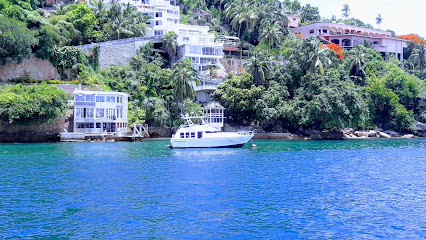
La Quebrada
Experience the thrill of cliff diving at La Quebrada, Acapulco’s iconic tourist attraction with breathtaking views and daring jumps.
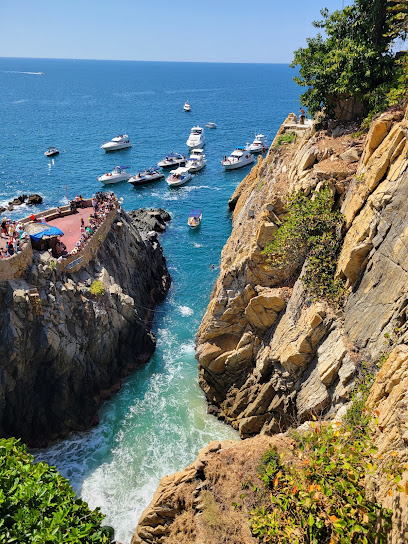
Diana the Huntress
Explore Diana the Huntress, an iconic monument in Acapulco, blending artistic beauty with cultural significance along the vibrant coastline.
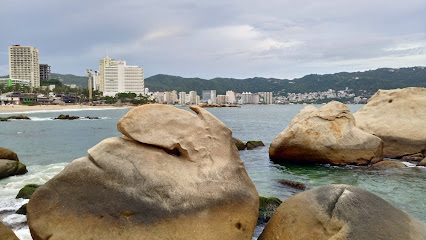
Parque Papagayo
Explore the lush landscapes and vibrant wildlife at Parque Papagayo, Acapulco's premier ecological park for relaxation and family fun.

El Rollo Acapulco
Discover the excitement of El Rollo Acapulco: a thrilling water and amusement park perfect for family fun and unforgettable memories in the heart of Acapulco.
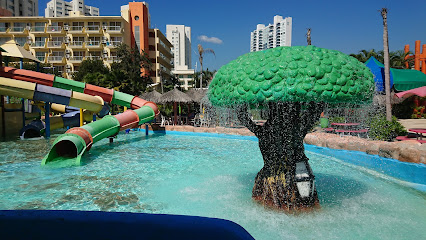
Acapulco Historical Museum of Fort San Diego
Explore Acapulco's history at the Historical Museum of Fort San Diego, showcasing artifacts and stories from the colonial era and beyond.
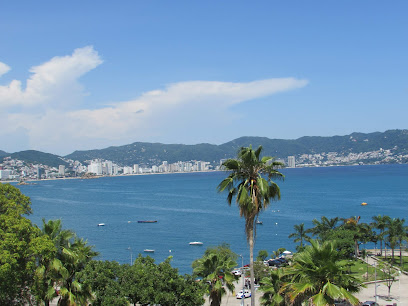
Mirador Puerto Marqués
Experience breathtaking vistas of the Pacific Ocean at Mirador Puerto Márquez, Acapulco's iconic scenic viewpoint.
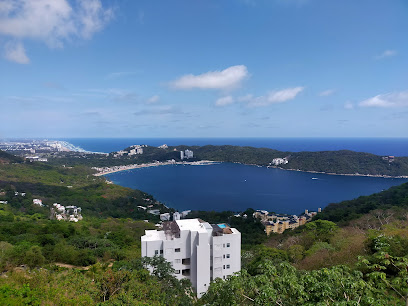
Pichilingue Beach
Discover Pichilingue Beach, a serene paradise in Acapulco, known for its stunning views, clear waters, and vibrant beach culture.
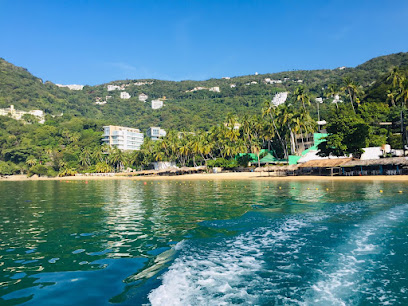
Fortín Álvarez
Explore Fortín Álvarez in Acapulco, a historic reenactment site that brings the past to life with stunning views and captivating performances.
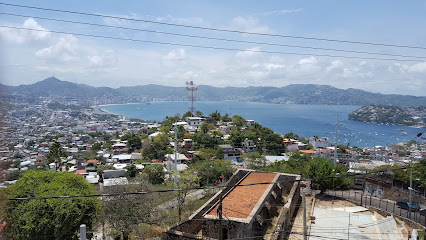
Essential places to dine
Paititi del Mar
Experience authentic seafood at Paititi del Mar in Acapulco - where every dish celebrates the ocean's bounty.
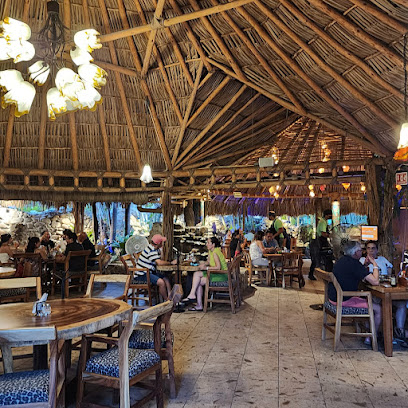
Zibu Acapulco
Experience exquisite Mexican cuisine at Zibu Acapulco with breathtaking ocean views and an enchanting atmosphere.
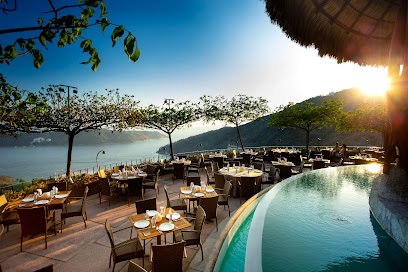
Mi Piaci
Experience authentic Italian cuisine at Mi Piaci in Acapulco - where every dish tells a story.
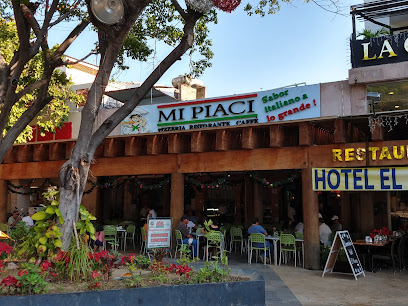
La Finca Acapulco
Discover authentic Mexican cuisine at La Finca Acapulco - where breakfast meets tradition in a vibrant setting.
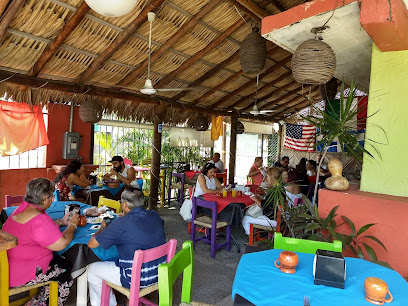
El Jaguar
Experience authentic Guerrero flavors at El Jaguar, Acapulco's premier destination for traditional Mexican breakfast.
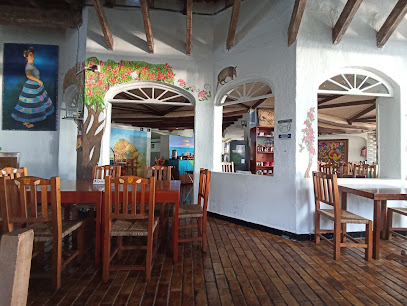
Antigua Acapulco
Experience authentic Mexican cuisine at Antigua Acapulco – where tradition meets taste in every grilled dish.
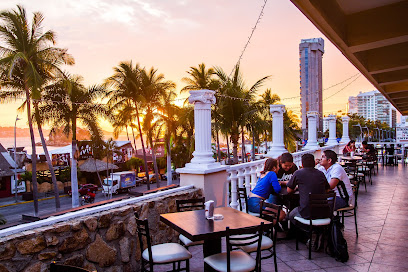
Sirocco Acapulco
Experience exquisite Spanish cuisine with breathtaking ocean views at Sirocco Acapulco - where every meal is a celebration.
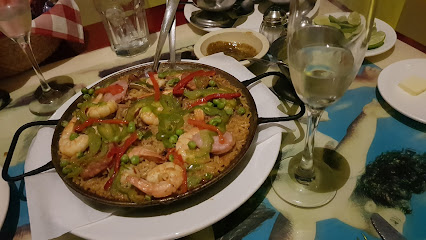
Becco al Mare
Experience exquisite Italian cuisine with stunning ocean views at Becco al Mare in Acapulco.
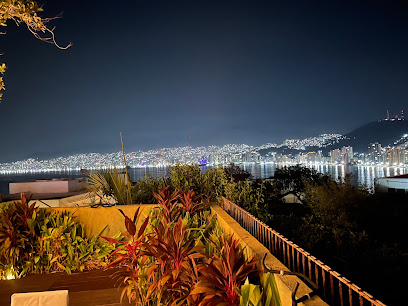
Carmenère Acapulco Restaurante
Discover Carmenère Acapulco: A premier Mediterranean restaurant offering exquisite cuisine and breathtaking views in the heart of Acapulco.
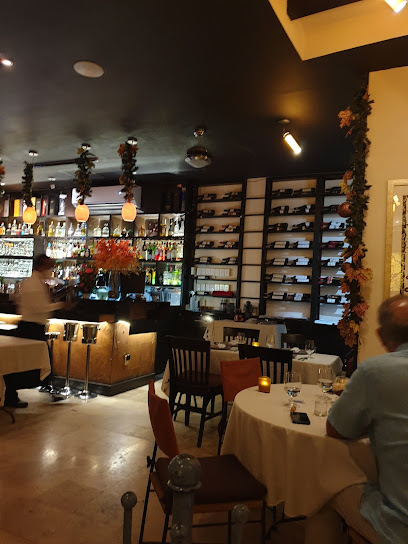
Tony's Bistro Acapulco
Discover culinary excellence at Tony's Bistro Acapulco - where exquisite flavors meet breathtaking views.
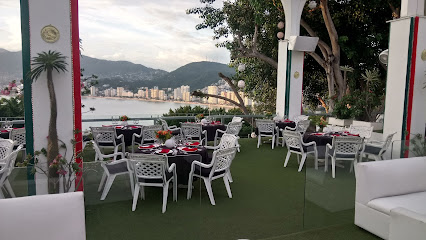
Markets, malls and hidden boutiques
Galerías Acapulco
Discover Galerías Acapulco, where shopping meets entertainment in a vibrant coastal paradise, perfect for tourists seeking leisure and local culture.
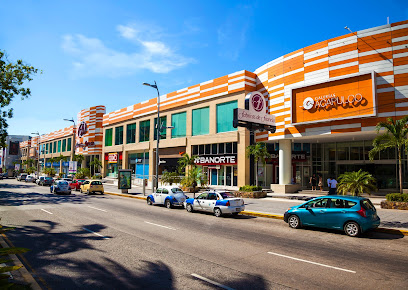
Osmart -Novedades y Regalos- Velázquez
Discover unique gifts and local treasures at Osmart in Acapulco - a charming gift shop for all your souvenir needs.
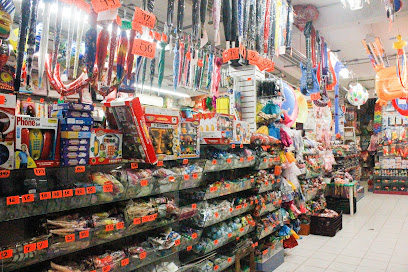
Silvershop Acapulco
Explore Silvershop Acapulco for unique souvenirs, local handicrafts, and exquisite jewelry that celebrate Mexican artistry and culture.
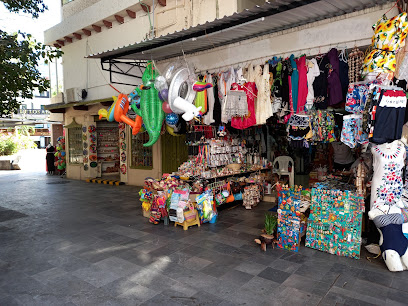
Circle k la quebrada
Explore Acapulco with ease at Circle K La Quebrada, your go-to store for snacks, drinks, and travel essentials.
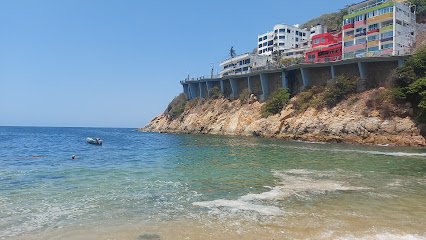
MoDy Boutique
Explore MoDy Boutique in Acapulco for unique fashion and accessories that capture the essence of Mexican artistry and style.

ModaGlam Boutique Acapulco
Discover the vibrant fashion scene at ModaGlam Boutique in Acapulco, where local style meets chic elegance for every occasion.
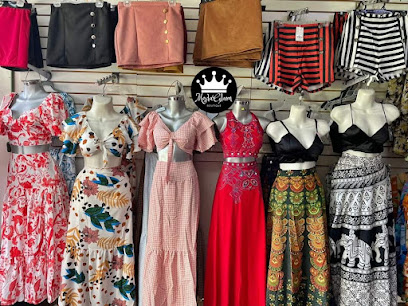
Seduction Sex Shop & Boutique Acapulco
Discover Acapulco's daring side at Seduction Sex Shop & Boutique, where adult entertainment meets chic fashion in an inviting atmosphere.

JennyferBazar
Discover unique gifts and local treasures at JennyferBazar, a charming gift shop in Acapulco offering a taste of Mexican culture.
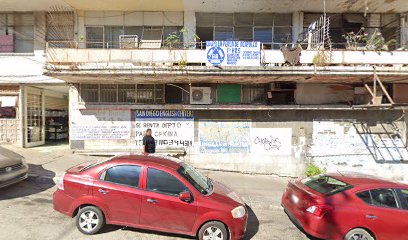
Sorté
Explore Sorté Jewelry Store in Acapulco for exquisite handcrafted pieces reflecting Mexican artistry and coastal elegance.
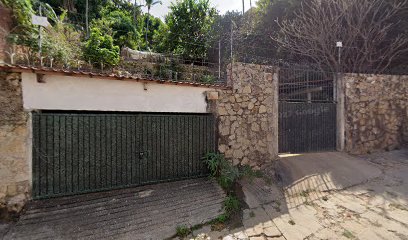
VENTAS ACAPULCO NARE
Explore VENTAS ACAPULCO NARE for unbeatable deals on clothing and unique souvenirs in the heart of Acapulco's bustling market scene.

Essential bars & hidden hideouts
Si Señor
Experience the essence of Mexican cuisine at Si Señor in Acapulco, where flavors meet stunning ocean views for an unforgettable dining adventure.
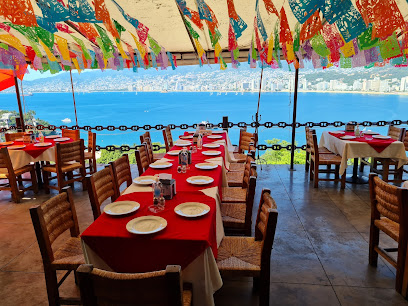
Barbarroja Acapulco
Discover Barbarroja Acapulco: A vibrant grill restaurant offering a taste of Mexico by the sea with stunning views and a lively atmosphere.
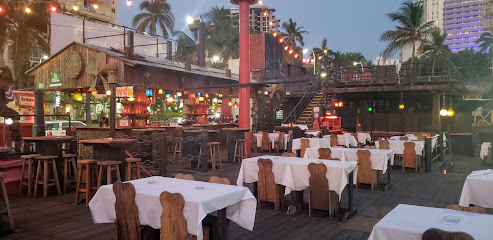
Antigua Acapulco
Experience the best of Mexican cuisine with a vibrant atmosphere at Antigua Acapulco, a grill and restaurant in the heart of Acapulco.
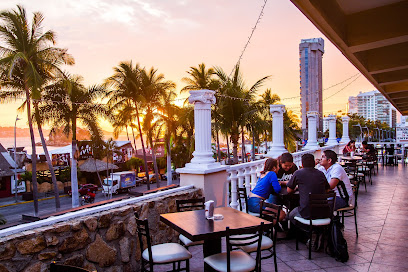
Angels House Acapulco
Experience the vibrant flavors of Acapulco at Angels House, where grilled delicacies and a lively atmosphere await every visitor.
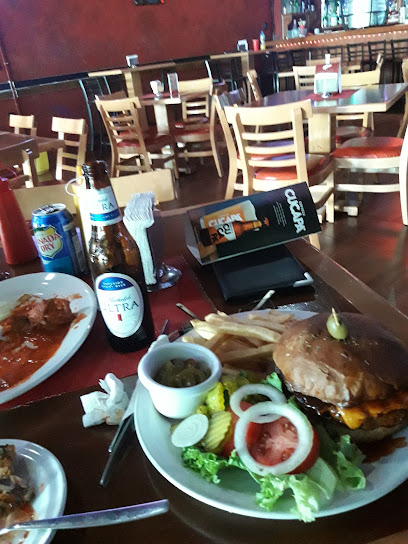
Terraza Sunset Bar
Experience breathtaking sunsets and vibrant nightlife at Terraza Sunset Bar, Acapulco's premier oceanfront destination for cocktails and relaxation.
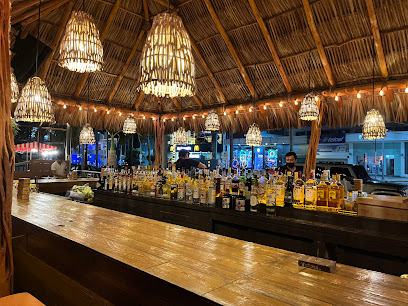
Britannia English Pub
Discover the vibrant atmosphere of Britannia English Pub in Acapulco, where traditional British charm meets local Mexican flair.
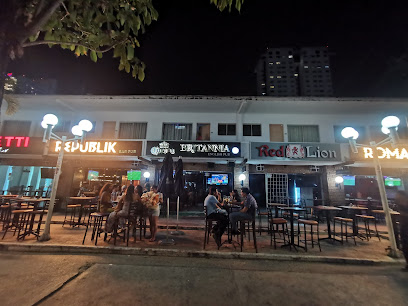
Sunset Bar, Las Brisas
Discover the enchanting Sunset Bar in Las Brisas, Acapulco – where stunning ocean views and exquisite cocktails meet relaxation.
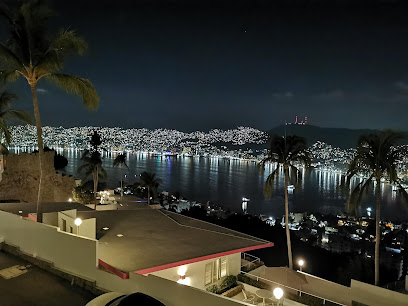
Republik Bar
Dive into the vibrant nightlife at Republik Bar, Acapulco's premier destination for cocktails, music, and unforgettable evenings.
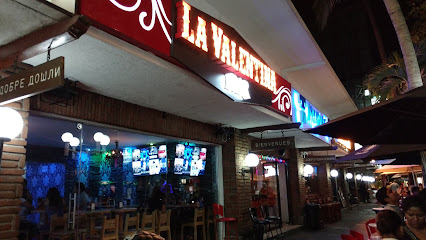
Djdkek
Experience the vibrant nightlife of Acapulco at Djdkek, a lively bar offering delicious cocktails and an unforgettable atmosphere.
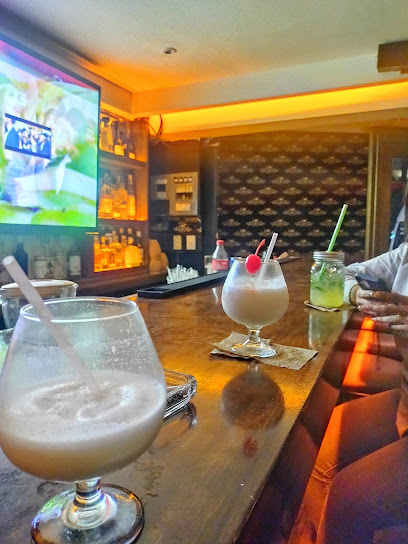
El Bar Acapulco
Experience the lively nightlife of Acapulco at El Bar Acapulco, where refreshing cocktails and breathtaking ocean views await.
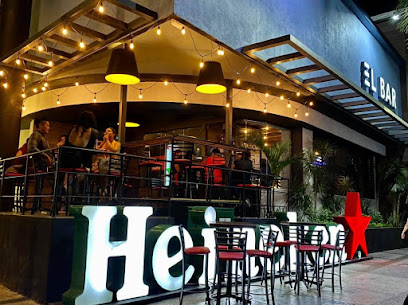
Local Phrases
-
- HelloHola
[oh-lah] - GoodbyeAdiós
[ah-dee-ohs] - YesSí
[see] - NoNo
[noh] - Please/You're welcomePor favor/De nada
[por fah-vor/deh nah-dah] - Thank youGracias
[grah-see-ahs] - Excuse me/SorryPerdón/Lo siento
[pehr-dohn/loh see-ehn-toh] - How are you?¿Cómo estás?
[koh-moh ehs-tahs] - Fine. And you?Bien. ¿Y tú?
[bee-ehn. ee too] - Do you speak English?¿Hablas inglés?
[ah-blahs een-glehs] - I don't understandNo entiendo
[noh ehn-tyehn-doh]
- HelloHola
-
- I'd like to see the menu, pleaseMe gustaría ver el menú, por favor
[meh goo-stah-ree-ah behr ehl meh-noo, por fah-vor] - I don't eat meatNo como carne
[noh koh-moh kahr-neh] - Cheers!¡Salud!
[sah-lood] - I would like to pay, pleaseMe gustaría pagar, por favor
[meh goo-stah-ree-ah pah-gahr, por fah-vor]
- I'd like to see the menu, pleaseMe gustaría ver el menú, por favor
-
- Help!¡Ayuda!
[ah-yoo-dah] - Go away!¡Vete!
[veh-teh] - Call the Police!¡Llama a la Policía!
[yah-mah ah lah poh-lee-see-ah] - Call a doctor!¡Llama a un doctor!
[yah-mah ah oon dohk-tohr] - I'm lostEstoy perdido
[ehs-toy pehr-dee-doh] - I'm illEstoy enfermo
[ehs-toy ehn-fehr-moh]
- Help!¡Ayuda!
-
- I'd like to buy...Me gustaría comprar...
[meh goo-stah-ree-ah kohm-prahr] - I'm just lookingSólo estoy mirando
[soh-loh ehs-toy mee-rahn-doh] - How much is it?¿Cuánto cuesta?
[kwan-toh kwehs-tah] - That's too expensiveEso es demasiado caro
[eh-soh ehs deh-mah-see-ah-doh kah-roh] - Can you lower the price?¿Puedes bajar el precio?
[pweh-dehs bah-hahr ehl preh-syoh]
- I'd like to buy...Me gustaría comprar...
-
- What time is it?¿Qué hora es?
[keh oh-rah ehs] - It's one o'clockEs la una
[ehs lah oo-nah] - Half past (10)Media (10)
[meh-dyah (dee-ehs)] - MorningMañana
[mah-nyah-nah] - AfternoonTarde
[tahr-deh] - EveningNoche
[noh-cheh] - YesterdayAyer
[ah-yehr] - TodayHoy
[oy] - TomorrowMañana
[mah-nyah-nah] - 1Uno
[oo-noh] - 2Dos
[dohs] - 3Tres
[trehs] - 4Cuatro
[kwah-troh] - 5Cinco
[seen-koh] - 6Seis
[seys] - 7Siete
[syeh-teh] - 8Ocho
[oh-choh] - 9Nueve
[nweh-veh] - 10Diez
[dyehs]
- What time is it?¿Qué hora es?
-
- Where's a/the...?¿Dónde está un/el...?
[dohn-deh ehs-tah oon/ehl] - What's the address?¿Cuál es la dirección?
[kwal ehs lah dee-rehk-syon] - Can you show me (on the map)?¿Puedes mostrarme (en el mapa)?
[pweh-dehs mohs-trahr-meh (ehn ehl mah-pah)] - When's the next (bus)?¿Cuándo pasa el próximo (autobús)?
[kwan-doh pah-sah ehl proh-ksee-moh (ow-toh-boos)] - A ticket (to ....)Un boleto (a ...)
[oon boh-leh-toh (ah ...)]
- Where's a/the...?¿Dónde está un/el...?
History of Acapulco Tradicional
-
Before European contact, the area now known as Acapulco was inhabited by various indigenous groups, including the Nahua and Mixtec peoples. These cultures thrived along the Pacific coast, engaging in fishing, trade, and agriculture. Their rich traditions and rituals laid the foundation for the cultural tapestry that defines Acapulco today.
-
Acapulco was officially founded by Spanish conquistador Hernán Cortés in 1531. The strategic location of the bay made it a crucial port for trade between the Philippines and Spain, establishing Acapulco as a vital hub during the colonial era. The development of the Manila Galleon trade route brought immense wealth and cultural exchange to the region.
-
From the late 16th century until the early 19th century, Acapulco served as the main port for the Manila Galleons, which transported goods such as silks, spices, and porcelain from Asia to Europe. This trade not only enriched Acapulco but also led to the construction of significant colonial architecture, including churches and fortifications, which are still visible in Acapulco Tradicional.
-
The early 19th century was a tumultuous time for Acapulco. The Mexican War of Independence (1810-1821) and later the Mexican Revolution (1910-1920) significantly impacted the region. Although Acapulco remained a vital port, the political upheaval led to economic challenges and shifts in power dynamics, affecting the local population and its culture.
-
In the mid-20th century, Acapulco transitioned from a colonial port to a glamorous tourist destination. The area attracted Hollywood stars and wealthy vacationers, leading to the development of luxury hotels and vibrant nightlife. Acapulco Tradicional, with its colonial charm and cultural heritage, became a focal point for visitors seeking to experience the historical essence of the city amidst the modern tourist attractions.
Acapulco Tradicional Essentials
-
Acapulco Tradicional is easily accessible from various neighborhoods in Acapulco. If you're coming from the modern tourist areas like Zona Dorada, you can take a local taxi or an Uber, which typically takes around 15-20 minutes depending on traffic. Public buses also operate frequently, with routes that connect Zona Dorada to the Tradicional area. For those arriving from Acapulco's main bus terminal, local taxis or buses heading towards the historical center can bring you directly to Acapulco Tradicional.
-
Acapulco Tradicional is best explored on foot due to its compact size and pedestrian-friendly streets. Local buses are available for longer distances and are quite affordable. Taxis are also an option, and it's advisable to agree on a fare before starting your journey. Bicycle rentals are limited, but some areas may offer bike-sharing options. Be mindful of traffic, especially during peak hours.
-
While Acapulco Tradicional is generally safe for tourists, it's important to remain aware of your surroundings. Areas near the beach can be more crowded and require vigilance against petty theft. Avoid venturing into neighborhoods such as La Zona Norte, especially at night, as they have higher crime rates. Always keep your belongings secure and be cautious when using ATMs.
-
In case of an emergency, dial 911 for police, fire, or medical assistance. Familiarize yourself with the locations of nearby hospitals or clinics. It's advisable to have travel insurance that covers emergencies. For minor health issues, local pharmacies are widely available and can provide over-the-counter medications. Always carry a copy of your ID and travel insurance details.
-
Fashion: Do dress modestly when visiting churches or local markets. Avoid overly revealing clothing. Religion: Do respect local customs, including removing shoes when entering homes or religious sites. Public Transport: Do give up your seat to elderly passengers. Don't eat or drink on public transport. Greetings: Do greet people with a friendly 'Hola' and a smile. A handshake is common. Eating & Drinking: Do try local dishes like pozole and ceviche. Don't refuse food or drink offered to you, as it can be seen as rude.
-
To experience Acapulco Tradicional like a local, visit the Mercado Central for authentic local food and crafts. Engage with local vendors and try street food like tacos and elote (corn on the cob). Attend local events or festivals if your visit coincides with them, as they offer a glimpse into the culture. For a quiet moment, visit the historical landmarks like the Fort of San Diego, which offers insights into Acapulco's colonial past. Also, don't miss the sunset views from the cliff divers' spot at La Quebrada.
Trending Landmarks in Acapulco Tradicional
-
Plaza Álvarez
-
La Quebrada
-
Fiesta & Bonanza yachts
-
Parque Papagayo
-
Parque De La Reina
-
Acapulco Historical Museum of Fort San Diego
-
Mirador Puerto Marqués
-
Catedral de Acapulco (Nuestra Señora de la Soledad)
-
La Vicenta
-
Playa Pie de La Cuesta
-
Pichilingue Beach
-
Acapulco Bay
-
Zona Arqueológica de Palma Sola
-
Estatua de Apolonio Castillo
-
Fortín Álvarez
Nearby Cities to Acapulco Tradicional
-
Things To Do in Taxco
-
Things To Do in Mexico City
-
Things To Do in Puebla
-
Things To Do in Puerto Escondido
-
Things To Do in Oaxaca
-
Things To Do in Queretaro
-
Things To Do in San Miguel de Allende
-
Things To Do in Veracruz
-
Things To Do in Guanajuato
-
Things To Do in Guadalajara
-
Things To Do in Puerto Vallarta
-
Things To Do in Chiapas
-
Things To Do in Ixtapa-Zihuatanejo
-
Things To Do in Quetzaltenango
-
Things To Do in Lake Atitlán



